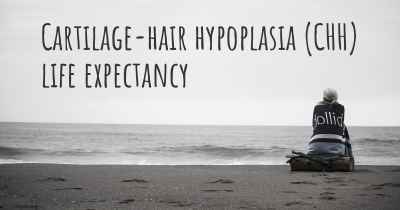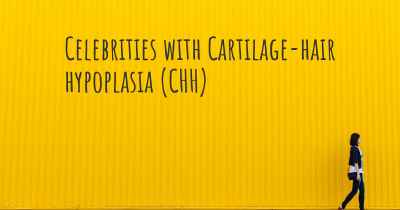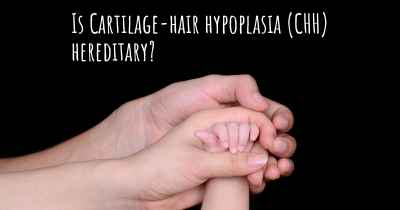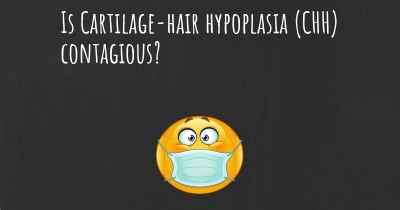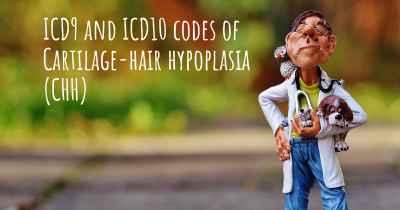What is the history of Cartilage-hair hypoplasia (CHH)?
When was Cartilage-hair hypoplasia (CHH) discovered? What is the story of this discovery? Was it coincidence or not?
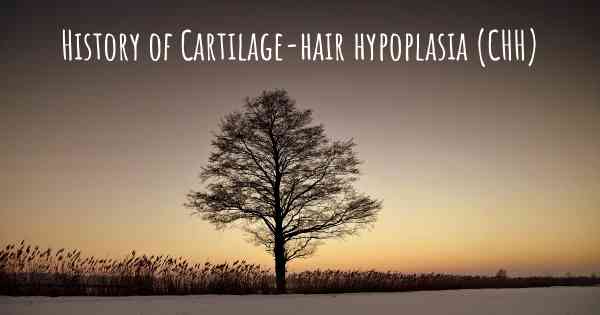
Cartilage-hair hypoplasia (CHH) is a rare genetic disorder that affects the development of cartilage and hair in the body. It is also known as metaphyseal chondrodysplasia, McKusick type, and is classified as a type of skeletal dysplasia.
CHH was first described in medical literature in 1965 by Finnish pediatrician Arto Viljo Vilppula. He reported a case of a child with short stature, fine and sparse hair, and skeletal abnormalities. Over time, more cases were identified, and the condition became recognized as a distinct disorder.
The exact cause of CHH is a mutation in the RMRP gene. This gene provides instructions for making a molecule called RNA component of mitochondrial RNA processing endoribonuclease, which is involved in the processing of RNA molecules. Mutations in the RMRP gene disrupt this process, leading to the characteristic features of CHH.
CHH is inherited in an autosomal recessive manner. This means that an individual must inherit two copies of the mutated gene, one from each parent, to develop the disorder. If both parents carry one copy of the mutated gene, they have a 25% chance of having a child with CHH in each pregnancy.
The prevalence of CHH is estimated to be around 1 in 235,000 to 1 in 1,000,000 individuals worldwide. It appears to be more common in certain populations, such as the Amish community in the United States and the Finnish population.
The characteristic features of CHH include short stature, fine and sparse hair, and skeletal abnormalities. Individuals with CHH typically have short arms and legs, a small chest, and a narrow ribcage. They may also have joint abnormalities, such as limited range of motion and dislocations. Additionally, they may experience immune system dysfunction, leading to an increased risk of infections.
Diagnosis of CHH is based on clinical features, radiographic findings, and genetic testing. X-rays can reveal specific skeletal abnormalities, such as shortening and irregularity of the long bones. Genetic testing can confirm the presence of mutations in the RMRP gene.
There is currently no cure for CHH, and treatment focuses on managing the symptoms and complications. Growth hormone therapy may be used to improve height in individuals with short stature. Regular monitoring and treatment of infections are important to prevent complications. Physical therapy and orthopedic interventions can help manage skeletal abnormalities and improve mobility.
With appropriate management and support, individuals with CHH can lead fulfilling lives. Early intervention and multidisciplinary care involving medical professionals, genetic counselors, and support groups can help individuals and their families navigate the challenges associated with the condition.
In conclusion, Cartilage-hair hypoplasia is a rare genetic disorder characterized by short stature, fine and sparse hair, and skeletal abnormalities. It was first described in 1965 and is caused by mutations in the RMRP gene. CHH is inherited in an autosomal recessive manner and has a prevalence of approximately 1 in 235,000 to 1 in 1,000,000 individuals worldwide. Diagnosis is based on clinical features, radiographic findings, and genetic testing. While there is no cure, appropriate management and support can help individuals with CHH lead fulfilling lives.
